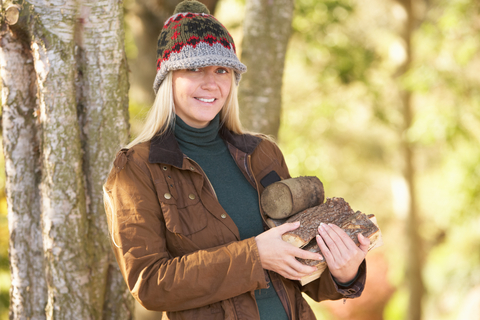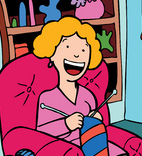When you begin knitting, you soon realize that there is a whole new vocabulary to learn as you go, such as the different flat knitting definitions. Flat knitting is a term used in both hand knitting and industrial knitting to describe a common technique. Of course, depending on what type of knitting you perform, there are different flat knitting definitions. We’ll discuss the two most common definitions in this article in detail.
Flat Knitting Definitions for Hand Knitting
In hand knitting, the term flat knitting refers to a piece of knitting that is turned periodically, usually every row. This technique is also sometimes referred to as back and forth knitting, which is a pretty self-explanatory name. It basically just means that at the end of each row, you turn your work and work backwards until you reach the starting point again. In other words, you work the piece back and forth.
Another way to describe flat knitting is to create a piece of knit fabric that has sides. This can refer to many different types of projects, such as:
• Knit baby blankets
• Knit afghans
• Knit scarves
• Knit throw pillows
• Knit headbands
It can also refer to many other projects, depending on how they are made. For example, while a knit hat is a circular garment, it can be knit flat and then sewn up. Many beginner knitters do this before they feel practiced enough to knit in the round.
How to Knit Flat
Flat knitting is usually done on two straight needles, although some knitters prefer to work with one set of circular needles instead. The biggest advantage to using circular needles is that you don’t risk losing one of your needles, but it is also easier when working with a large piece of work such as an afghan since circular needles can hold more stitches. Regardless of your needle preference, the technique is still done by turning your work.
The most common stitch in knitting is the stockinette stitch, where all of the little “v’s” are on one side of the fabric. While this is called a knitting stitch, it is actually a stitch combination, since you have to use two different stitches to create the look. These stitches are the knit stitch, and the purl stitch. When looking at the right side of your work, or the side that will face out and be seen, you will use the knit stitch, but once you turn your work, you must use a purl stitch for the next row, since that is basically a knit stitch performed backwards. This allows all of the “v’s” to line up on the right side of the fabric and all of the bumps to line up on the wrong side. This technique provides you with a smooth, elastic finished piece, such as the one commonly seen on sweaters and hats.
Flat Knitting Definitions for Industrial Knitting
While the term flat knitting is pretty self-explanatory when you look at it in terms of hand knitting, it holds a completely different meaning when you consider industrial knitting. Industrial knitting is the process of using knitting machines in order to mass-produce knit material and garments found in stores.
Flat knitting machines use two needle beds to quickly create complex designs and shaped garments for commercial use.
Industrial flat knitting, also referred to as weft knitting, is slower than using a circular knitting machine, but the ability to create more complicated stitch patterns and fitted garments makes up for the lack of speed these machines use.
The advantages of using a flat knitting machine include:
• Flat knitting machines are the most versatile knitting machines available
• Flat knitting machines allow for many different yarns to be used.
• Flat knitting machines are simple to supervise and operate.
As you can see, flat knitting definitions vary depending on the technique you use. As an industrial knitter, using machinery to produce commercial knits, flat knitting refers to what sort of knitting machine is used and what sort of detail can go into your project. For the more common hand-knitter, flat knitting is just the basic knitting. By working back and forth across your rows of knitting, using knit and purl stitches, you can easily master the most common of flat knitting definitions.






